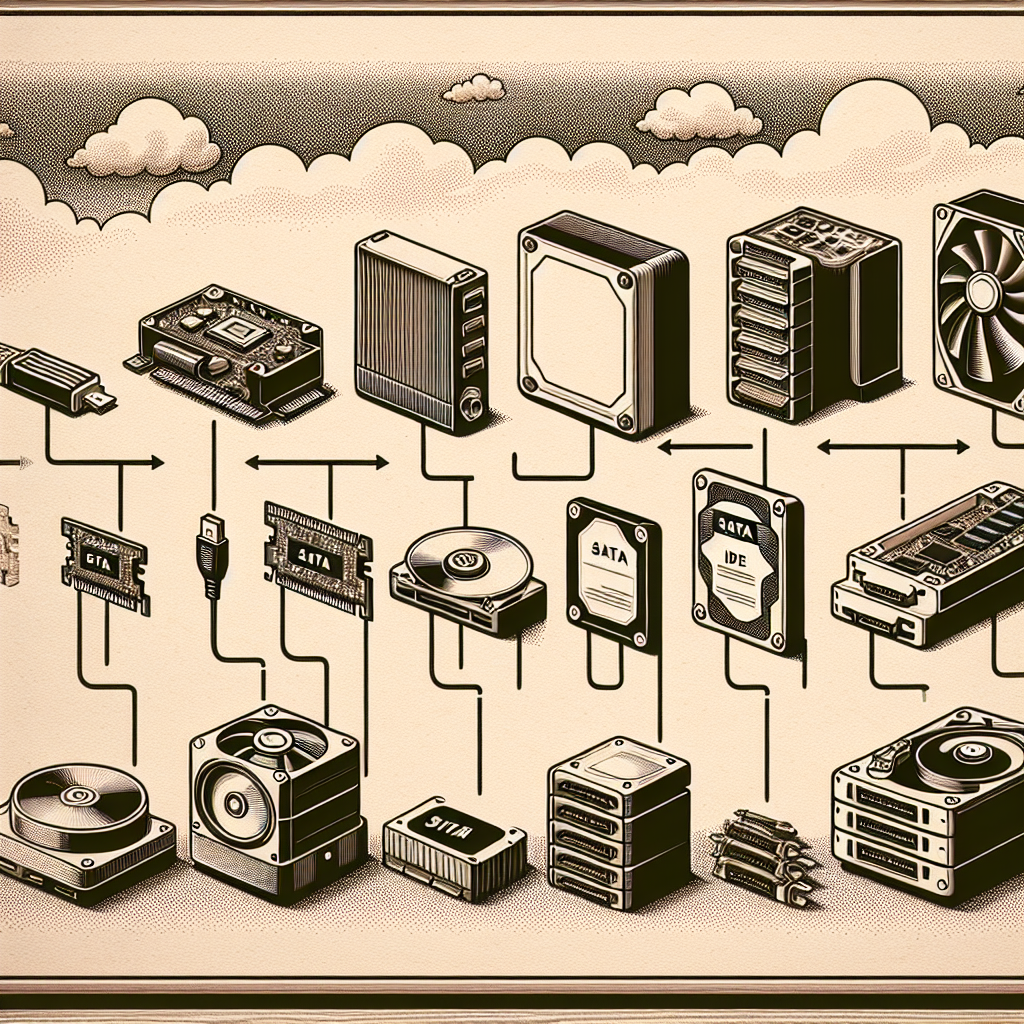The Evolution of SATA: From IDE to SATA 3.0
SATA (Serial Advanced Technology Attachment) has become the standard interface for connecting storage devices to computers over the past two decades. The evolution of SATA has been a fascinating journey, with each new version bringing faster speeds and improved performance.
It all started with IDE (Integrated Drive Electronics), the standard interface for connecting storage devices to computers in the 1990s. IDE used a parallel data transfer method, which limited its speed and performance. As technology advanced and the need for faster data transfer speeds grew, a new interface was needed.
In 2003, SATA 1.0 was introduced as the successor to IDE. SATA 1.0 brought significant improvements in speed and performance compared to IDE. With a data transfer rate of 1.5 gigabits per second (Gbps), SATA 1.0 was a major leap forward in storage technology.
SATA 2.0, also known as SATA II, was introduced in 2004. It doubled the data transfer rate to 3 Gbps, providing even faster speeds and better performance. SATA II also introduced new features such as Native Command Queuing (NCQ) and hot-swapping capabilities, making it a more versatile and reliable interface for storage devices.
In 2009, SATA 3.0, also known as SATA III, was introduced. SATA III doubled the data transfer rate once again, reaching speeds of 6 Gbps. This significant increase in speed allowed for even faster data transfer rates and improved performance for storage devices. SATA III also introduced new features such as advanced power management and improved compatibility with solid-state drives (SSDs).
Today, SATA 3.0 remains the standard interface for connecting storage devices to computers. While newer interfaces such as NVMe (Non-Volatile Memory Express) have emerged as faster alternatives for high-performance storage devices, SATA 3.0 continues to be widely used for mainstream storage solutions.
The evolution of SATA from IDE to SATA 3.0 has been a testament to the rapid advancements in storage technology. With each new version, SATA has continued to improve in speed, performance, and reliability, making it an essential component in modern computing systems. As technology continues to evolve, it will be interesting to see what the future holds for SATA and the storage industry as a whole.


